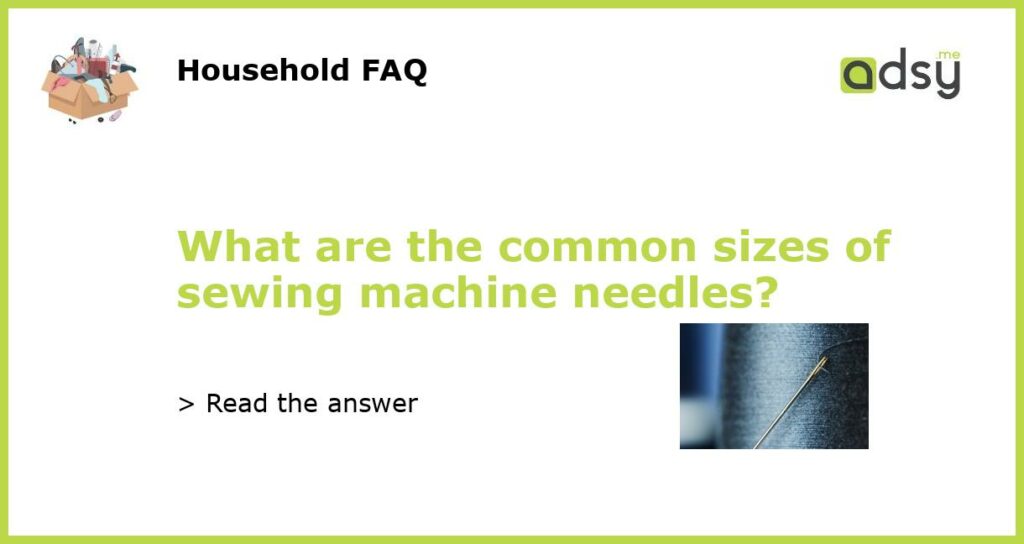Understanding the Different Sizes of Sewing Machine Needles
Sewing machine needles come in various sizes, and each size is designed for different types of fabrics and projects. When it comes to choosing the right needle size for your sewing machine, it’s essential to understand the purpose behind each size and how it can affect your sewing results.
Sizes and Their Meanings
Sewing machine needle sizes are indicated on the packaging or the needle itself. The size is represented by a number, and the larger the number, the larger the needle. The two most commonly used systems for indicating needle sizes are the American and European systems.
For the American system, needle sizes typically range from 8 to 19, with smaller numbers corresponding to smaller needles. In the European system, needle sizes range from 60 to 120, with higher numbers representing larger needles.
The Importance of Choosing the Right Size
Using the correct needle size is crucial for achieving desirable sewing results. If you use a needle that is too small for the fabric you are sewing, it may result in skipped stitches or thread breakage. On the other hand, if you use a needle that is too large, it may leave visible holes in the fabric or cause uneven stitches.
By selecting the appropriate needle size, you can ensure that the fabric is penetrated with the right amount of force, allowing the thread to pass through smoothly without damaging the fabric or causing other sewing issues.
Common Needle Sizes and Their Applications
Here are some of the most common needle sizes and their recommended applications:
– Microtex/Sharp (60/8, 70/10): Ideal for lightweight fabrics such as silk and chiffon.
– Universal (80/12): Versatile needle size that can be used for various medium-weight fabrics like cotton and linen.
– Jeans/Denim (90/14): Designed for heavyweight fabrics such as denim or canvas.
– Stretch (75/11): Suitable for stretchy fabrics like jersey or spandex.
– Quilting (80/12): Specifically made for quilting projects, allowing for easy penetration through multiple layers of fabric.
Factors to Consider in Needle Size Selection
While the general rule of thumb is to select a needle size based on the fabric weight, there are other factors to consider as well:
– Thread thickness: Thicker threads may require larger needle sizes.
– Fabric type: Different fibers may have specific requirements. For example, knitted fabrics may require a ballpoint needle.
– Sewing technique: Certain techniques, such as topstitching, may require a different needle size to achieve the desired effect.
Experimenting and Test Sewing
Ultimately, determining the right needle size may involve some trial and error. It’s a good idea to keep an assortment of needle sizes on hand and test them out on a fabric scrap before starting a project. This way, you can see how each size affects the stitch quality and fabric appearance.
In conclusion, understanding the different sizes of sewing machine needles is crucial for achieving professional-looking sewing results. By selecting the appropriate needle size for your fabric and project, you can ensure smooth stitching and avoid any potential issues.






